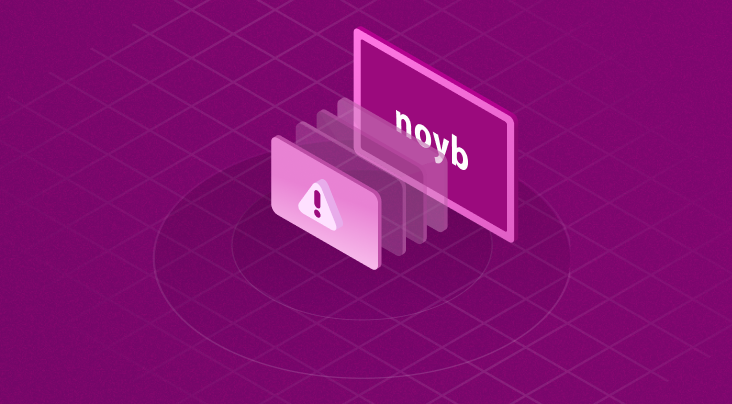AI Safety is increasingly becoming a paramount concern for those involved in AI development, design, and deployment. AI safety, a combination of operational practices, philosophies, and mechanisms, aims to ensure that any developed AI systems and models operate in the manner originally envisioned by the developers without resulting in any unintended consequences or harm.
To do this, the developers involved in developing these models and systems must undertake relevant measures to ensure the integrity of algorithms, appropriate data security, and regulatory compliance.
Within the grander context of generative AI (GenAI), the scope and relevance of AI Safety take a further elevated degree of importance owing to how radically autonomous GenAI models and systems are designed to be.
Historically, rapid technological leaps and compounding complexity have been critical ingredients in GenAI development. Concerns around AI safety are not new. These concerns were initially largely theoretical, with most qualms centered around the potential misuse or abuse of any AI developments. However, with GenAI functionalities becoming increasingly integrated into both commercial and household usage, the broad range of ethical, social, and technical challenges posed by AI represent an existential challenge.
Furthermore, this highlights the enormous potential of AI to impact virtually every aspect of human life directly. This alone underscores the urgency for both thought and actions dedicated to ensuring AI safety.
Algorithmic integrity, data security, and regulatory compliance are all vital considerations that organizations must take into account when devising strategies and methods to develop GenAI algorithms free of bias while being capable of producing reliable outcomes. More importantly, each of these considerations needs to be carefully balanced owing to various obligations related to AI governance.
In the face of all this, it becomes clear that AI safety is a comprehensive process, both dynamic and collaborative in nature. Multiple stakeholders, including policymakers, AI developers, users, and compliance experts, need to be appropriately involved in this process to provide consistent vigilance, innovation, and commitment to the ethical principles that will be key in ensuring all AI development leads to a positive contribution to society.
Why is AI Safety Important?
The importance of appropriate AI safety can be gauged from the risks and consequences that can easily be associated with unregulated AI development. Organizations involved in the development, design, and implementation of AI models and systems have been devoting significant material and human resources toward increasing these systems’ functional capabilities.
As these capabilities grow, their potential to cause unexpected and harmful outcomes increases proportionally. Left unchecked, these outcomes can lead to or further exacerbate existing social inequalities, privacy, and security risks, in addition to being used to undermine democratic processes.
Hence, AI developers have both an ethical and operational responsibility to place considerations related to AI safety at the forefront of their AI development process. In doing so, they must carry out a comprehensive assessment related to the broader implications of their work as well as its potential misuses. Such a process is meant to cultivate a sense of accountability related to AI development, especially in instances where the likelihood of AI decisions leading to adverse outcomes is high.
Furthermore, since the economic, cultural, and technological impact of AI can be extensive, it has the potential to radically transform the nature of employment, human-machine interactions, global economic disparities, and digital ethics. With each technological leap within the AI functionalities, the aforementioned potential evolves into near certainty.
Consequently, the long-term impact of AI on society and governance will be profound, with power dynamics, cultural norms, and ethical frameworks undergoing a vast transformation. With that in mind, ensuring AI safety will not only be crucial for preventing immediate operational harm but also shepherd the future of society as we know it.
Discussing AI Risks
AI risks can be categorized quite extensively. Each poses a unique challenge for organizations, owing to the varying degrees of immediacy and scale of possible damage they can cause.
AI Model Risks
The most immediate AI-related risks are present within the AI model itself. These can include:
Model Poisoning
The AI model learning process is a critical process that determines the ability of any model to deliver accurate and reliable results. Malicious actors may compromise this process by injecting the training dataset with false and misleading data. Consequently, the model will learn and adapt these incorrect patterns, which will affect the generated outcomes.
Bias
As a result of model poisoning, the AI model may generate outputs owing to the discriminatory data and assumptions that were part of the compromised dataset it was trained on. These assumptions can be racial, socio-economic, political, or gendered. These biased outputs can lead to adverse consequences, especially in instances where the compromised AI model is being used for critical decision-making purposes such as recruitment, credit evaluations, and criminal justice.
Hallucination
Hallucination refers to an output generated by an AI model that is either wholly false or corrupted. However, since the output is coherent and may follow a series of outputs that were not false, they may be harder to spot and identify.
Prompt Usage
Prompts for AI models and systems can also pose various risks for both organizations and their users, including the following:
Prompt Injection
An input prompt is manipulated with the purpose of compromising an AI model’s outputs. If successful, a prompt injection will lead to false, biased, and misleading responses from the AI model since the training dataset it is trained on will have been manipulated to trigger such a result.
Prompt DoS
A Denial of Service (DoS) attack can be launched against an AI model to crash it. It is done by triggering an automated response within the model that has been trained on a manipulated dataset. The response can be triggered via the use of a compromised prompt intended to start a chain of events leading to eventual overload and crash of the model.
Exfiltration Risks
Exfiltration risks refer to the ability of malicious actors to exploit certain words, phrases, and terminologies to reverse engineer and leak training data. Information retrieved from such reverse engineering can then be further used to exploit potentially sensitive data. Such actors can deploy a combination of prompt injections and DoS attacks to this end.
Other Risks
Some other significant risks to consider include the following:
Data Leakage
Data Leakage refers to an instance where test data that was not supposed to be part of the AI model’s training dataset somehow finds itself part of the dataset, consequently affecting and influencing the model’s generated outputs. Among the various operational challenges this can pose, data leakage can also lead to data privacy-related issues where confidential information may be compromised.
Non-Regulatory Compliance
Governments across the world have begun to realize the importance of regulation to cement the idea of responsible AI development, in addition to establishing dedicated bodies that can recommend the best practices to adapt for safer and more responsible use of AI. The recently established US AI Safety Institute (USAISI) by the National Institute of Standards and Technology (NIST) is a recent example of this.
Of course, the lack of a singular framework that can serve as a de facto blueprint means that most governments are still in the trial-and-error phase of determining the best approach.
For organizations, this means having to adjust their operations as well as overall AI development functions to ensure compliance with the various regulations that may come into effect globally. While most of these regulations share similar principles, they may also differ in vital aspects, requiring organizations to approach each regulation differently. Failure to do so can leave an organization subject to both legal and regulatory penalties that can lead to further reputational losses in the long term.
A Framework for AI Safety and Governance
Appropriately identifying the risks is an essential part of placing AI safety at the heart of the overall AI development process. However, it needs to be followed up with practical steps aimed at effectively reducing the risks posed by the developed AI capabilities.
To that end, organizations must adopt a structured AI governance framework that can manage AI processes effectively while providing operational efficiency and compliance with regulatory standards.
Such a governance framework can include the following capabilities:
AI Model Discovery
To appropriately deal with the risks posed by AI models and systems, an organization should have a transparent and comprehensive understanding of its AI infrastructure. Cataloging all models in use across its public clouds, SaaS applications, and private environments achieves precisely that.
Once all sanctioned and unsanctioned AI models are identified and cataloged, they can be accurately classified per the organization’s unique needs, obligations, as well as overall risk mitigation plans.
AI Model Risk Assessment
With an updated overview of all AI models and systems being used, organizations can appropriately evaluate each for the unique risks they expose an organization to. Consequently, the most immediate risks to an organization can be identified, including bias, copyrighted data, disinformation, and inefficiencies such as excessive energy consumption.
Data + AI Mapping and Monitoring
Once an organization has discovered and evaluated all AI models and systems in use, it can proceed to connect them to their relevant data sources, processes, vendors, potential risks, and compliance obligations to provide rich context around AI models.
Data + AI Controls
Robust in-line data and AI controls, like anonymization of data before providing it to AI models, entitlement controls, and LLM firewalls, can be used by organizations to enforce compliance with security, privacy, and governance policies, securing sensitive data throughout its lifecycle.
How Securiti Can Help
As AI continues to expand in terms of both capabilities and complexities, AI safety becomes exponentially more important.
Securiti, a global market leader in enterprise data privacy, security, compliance, and governance solutions, can significantly help in empowering organizations to adopt AI capabilities within their operations while ensuring appropriate regulatory compliance. Thanks to its Data Command Center, an enterprise solution based on a Unified Data Controls framework, it can enable organizations to optimize their oversight and compliance with various data and AI regulatory obligations.
Furthermore, Securiti offers an AI Governance course that has been designed to equip those who enroll with a thorough understanding of the core concepts in GenAI, global AI regulations, compliance obligations, AI risk management, and AI governance frameworks for responsible innovation.
Request a demo today and learn more about how Securiti can help your organization implement measures necessary to ensure AI safety within your internal processes.
Frequently Asked Questions (FAQs)
Here are some commonly asked questions you may have related to AI Safety:













